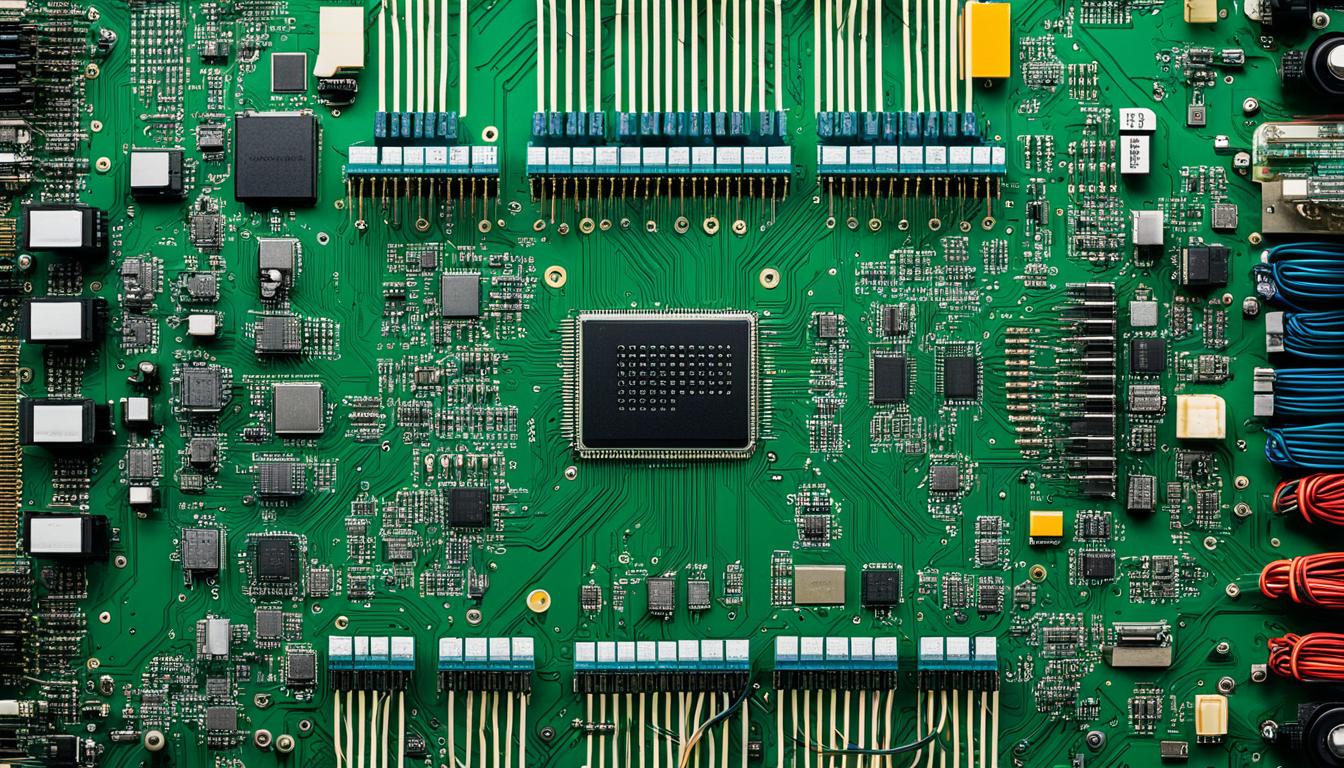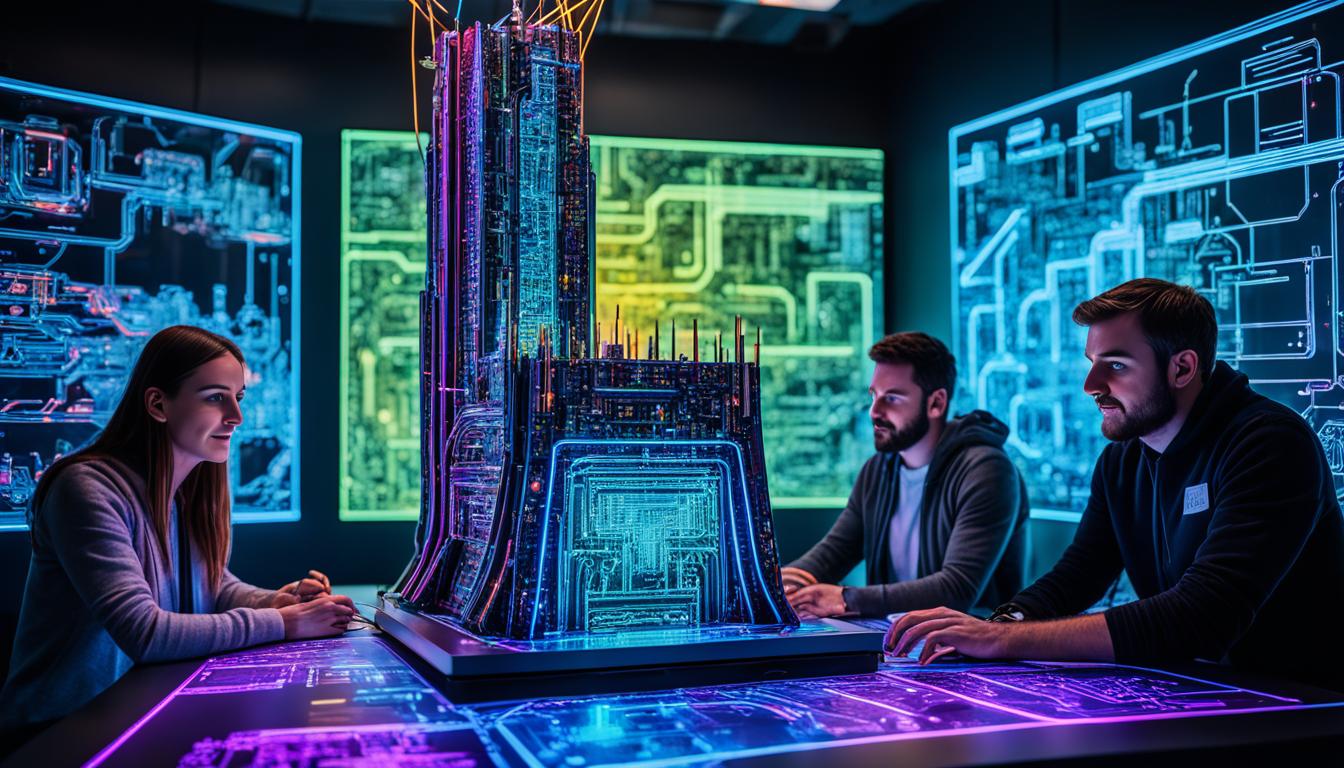Are you an aspiring engineer in India preparing for your VLSI interview? Look no further – we are here to provide you with expert insights on computer architecture that will give you the edge you need!
Computer architecture is a fundamental aspect of VLSI interviews, and understanding its concepts is key to success. In this article, we will cover everything you need to know about computer architecture, tailored specifically for aspiring engineers in India.
From the basics to advanced concepts, we will delve into topics such as Von Neumann architecture, instruction sets, data paths, memory organization, pipelining, cache memory, virtual memory, and parallel processing.
But it doesn’t end there – we will also explore how computer architecture principles are applied in VLSI design. You will gain insights into pipelining in VLSI, microarchitecture design, power optimization, and technology scaling.
Strengthening your understanding of computer architecture will not only boost your confidence during your VLSI interview but also equip you with knowledge that is highly valued in the VLSI industry.
So, get ready to conquer the world of computer architecture and ace your VLSI interview. Let’s dive in!
Table of Contents
Understanding the Basics of Computer Architecture
Here, we will delve into the fundamental concepts of computer architecture that are crucial for your VLSI interview preparation. It is essential to have a solid understanding of the basics of computer architecture to excel in your VLSI career.
Von Neumann Architecture
The Von Neumann architecture, named after the renowned mathematician and computer scientist John von Neumann, is the foundation of modern computer systems. It consists of a central processing unit (CPU), memory, input/output devices, and a control unit.
Instruction Sets
Instruction sets are a vital aspect of computer architecture. They define the commands and operations that a computer processor can execute. There are different types of instruction sets, such as Reduced Instruction Set Computing (RISC) and Complex Instruction Set Computing (CISC), each with its own advantages and limitations.
Data Paths
Data paths refer to the routes through which data travels within a computer system. They include registers, arithmetic logic units (ALUs), and buses. Understanding the data paths is crucial for optimizing performance and ensuring efficient data transfer within the system.
Memory Organization
Memory organization plays a critical role in computer architecture. It involves the storage and retrieval of data. Main memory, cache memory, and virtual memory are crucial components in memory organization. Cache memory, for example, is a smaller, high-speed memory that stores frequently accessed data, reducing the time taken to fetch information from the main memory.

Understanding these fundamental concepts of computer architecture will provide you with a solid foundation for your VLSI interview preparation. Now, let’s move on to the more advanced concepts in the next section.
Advanced Concepts in Computer Architecture
Building upon the basics of computer architecture, let’s dive into some advanced concepts that are crucial for your VLSI interview preparation. Understanding these topics will not only showcase your in-depth knowledge but also greatly enhance your chances of excelling in the interview.
Pipelining
Pipelining is a technique used in computer architecture to maximize instruction throughput. It allows the processor to execute multiple instructions simultaneously by breaking them down into smaller stages and overlapping their execution. This results in improved performance and faster processing speeds. It is essential to grasp the intricacies of pipelining to showcase your understanding of advanced computer architecture concepts during your VLSI interview.
Cache Memory
Cache memory is a high-speed memory located close to the CPU, designed to store frequently accessed data. It serves as a buffer between the CPU and main memory, reducing the time required to access data and improving system performance. Understanding the organization, levels, and mapping techniques of cache memory is crucial for designing efficient computer systems and optimizing performance in VLSI designs.
Virtual Memory
Virtual memory is a memory management technique that enables the system to use secondary storage (usually the hard disk) as an extension of the primary memory. It allows programs to use more memory than physically available by storing parts of the program in secondary storage and bringing them into the main memory as needed. Understanding virtual memory implementation, addressing, and management is essential for designing efficient memory systems in computer architectures.
Parallel Processing
Parallel processing involves the simultaneous execution of multiple instructions to perform computational tasks more quickly. It utilizes multiple processors or cores to divide the workload, increasing overall performance and efficiency. Understanding parallel processing concepts, such as scalability, synchronization, and load balancing, is crucial in designing efficient and high-performance systems in VLSI architectures.
By mastering these advanced concepts in computer architecture, you will demonstrate your expertise in VLSI design and greatly enhance your chances of success in your VLSI interview. Now let’s explore these topics in more detail with the help of a comprehensive table.
| Advanced Concepts in Computer Architecture | Description |
|---|---|
| Pipelining | A technique to execute multiple instructions simultaneously by breaking them down into smaller stages and overlapping their execution. |
| Cache Memory | A high-speed memory located close to the CPU to store frequently accessed data, reducing access time and improving system performance. |
| Virtual Memory | A memory management technique that allows the system to use secondary storage as an extension of the primary memory. |
| Parallel Processing | The simultaneous execution of multiple instructions using multiple processors or cores, increasing system performance and efficiency. |

Understanding these advanced concepts in computer architecture will not only set you apart during your VLSI interview but also equip you with the knowledge and skills needed to excel in the field of VLSI design. Now that we have covered the advanced concepts, let’s move on to the practical application of computer architecture in VLSI design.
Application of Computer Architecture in VLSI Design
In the field of VLSI design, the application of computer architecture plays a crucial role in creating efficient and high-performance integrated circuits. By understanding how computer architecture principles are applied in VLSI design, engineers can design and optimize complex systems with precision and effectiveness.
1. Pipelining in VLSI
Pipelining is an essential technique in VLSI design that allows for the efficient execution of instructions. By breaking down the execution process into multiple stages, pipeline architectures enable simultaneous instruction processing, enhancing overall throughput and performance. This approach minimizes the time wasted in sequential processing and optimizes resource utilization.
2. Microarchitecture Design
Microarchitecture design in VLSI focuses on the internal structure and organization of a processor. It involves designing key components such as the datapath, control unit, and memory hierarchy to facilitate efficient data processing and manipulation. A well-designed microarchitecture improves performance, power efficiency, and overall system reliability.
3. Power Optimization
Power optimization is a critical aspect of VLSI design, aiming to reduce power consumption without compromising performance. Techniques such as clock gating, voltage scaling, and power-gating are employed to minimize power leakage and dynamic power consumption. Effective power optimization strategies enable the design of energy-efficient VLSI circuits, which is of utmost importance in today’s portable and battery-powered devices.
4. Technology Scaling
Technology scaling refers to the process of reducing the size of transistors and increasing the density of components on integrated circuits. This enables the production of smaller, faster, and more power-efficient VLSI designs. As technology scales down, new challenges arise, such as leakage currents and signal integrity issues. Therefore, VLSI designers must adapt their architecture and implement innovative solutions to overcome these challenges and harness the benefits of technology scaling.
By applying computer architecture principles in VLSI design, engineers can create optimized systems that meet the demands of modern technology. A strong foundation in computer architecture empowers VLSI designers to make informed decisions, balance performance and power considerations, and push the boundaries of innovation in the field.
| Advantages of Applying Computer Architecture in VLSI Design | |
|---|---|
| Enhanced performance | Optimized resource utilization |
| Improved power efficiency | Energy-efficient designs for portable devices |
| Smaller form factor | Faster processing speed |
| Increased density of components | Pushing the boundaries of innovation |
Conclusion
In conclusion, mastering computer architecture is essential for excelling in your VLSI interview. Understanding the basics, grasping advanced concepts, and exploring its applications in VLSI design will greatly enhance your chances of success. By building a solid foundation in computer architecture, you will be well-prepared to tackle any question related to this topic during your interview.
Computer architecture forms the backbone of VLSI design, and its importance cannot be overstated. It is the framework that enables the efficient and effective execution of complex circuits and systems. By familiarizing yourself with concepts such as Von Neumann architecture, instruction sets, cache memory, and technology scaling, you will be equipped to analyze and optimize designs, making you a valuable asset in the VLSI industry.
Aspiring VLSI engineers must keep in mind that computer architecture is a constantly evolving field. Technology advancements and emerging trends shape the landscape, and it is essential to stay updated with the latest developments. Continuously enhancing your knowledge and skills in computer architecture will ensure a successful and thriving VLSI career, where you can contribute to cutting-edge innovations and advancements in the semiconductor industry.

